
How to Use MCP7384XX: Examples, Pinouts, and Specs
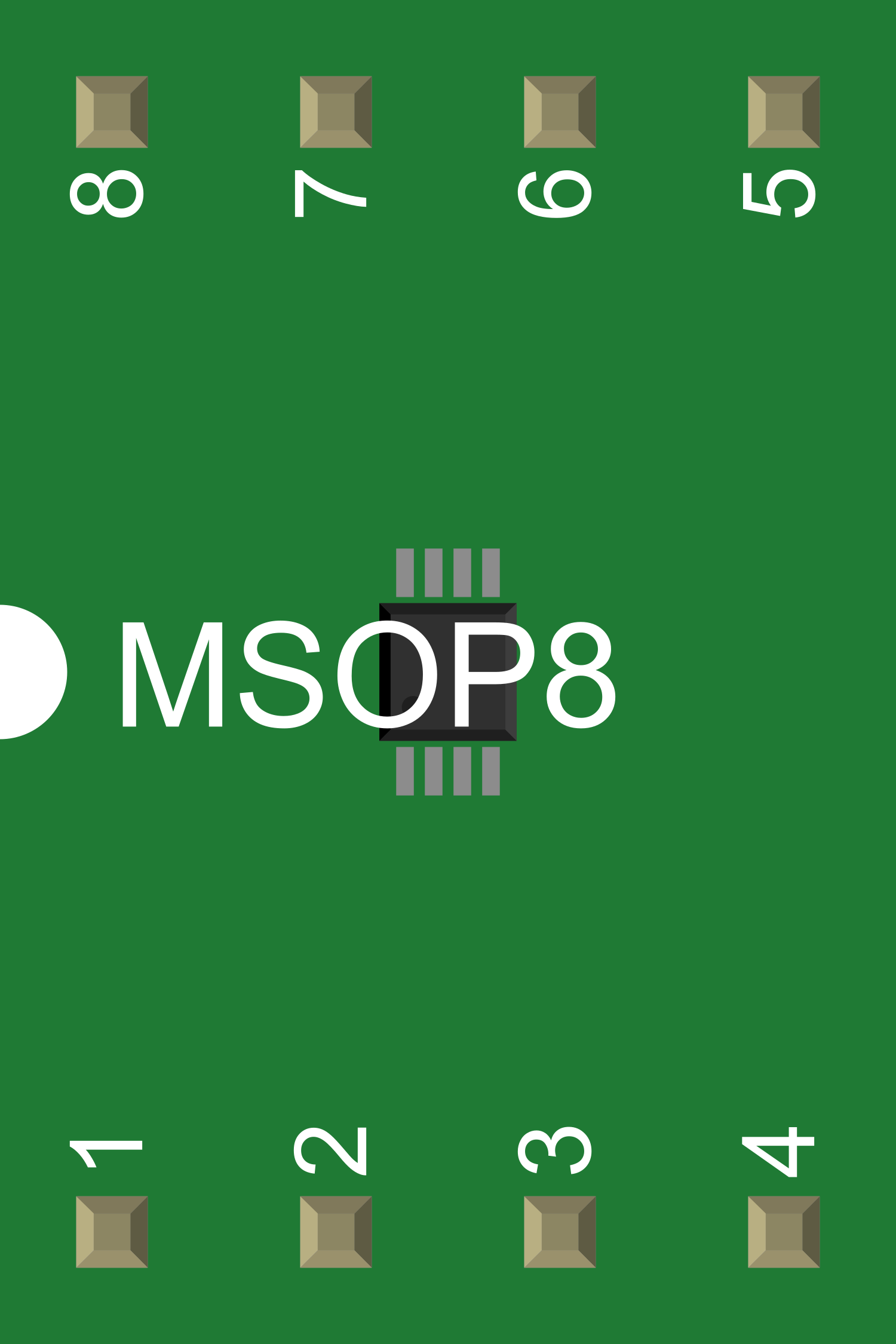
 Design with MCP7384XX in Cirkit Designer
Design with MCP7384XX in Cirkit DesignerIntroduction
The MCP7384XX is a sophisticated linear charge management controller designed for applications where space is at a premium and cost-effectiveness is crucial. It is ideal for single-cell, lithium-ion (Li-ion), or lithium-polymer (Li-Poly) battery charging. This component is commonly used in portable electronics, such as smartphones, tablets, and wearable devices, due to its compact size and efficiency.
Explore Projects Built with MCP7384XX
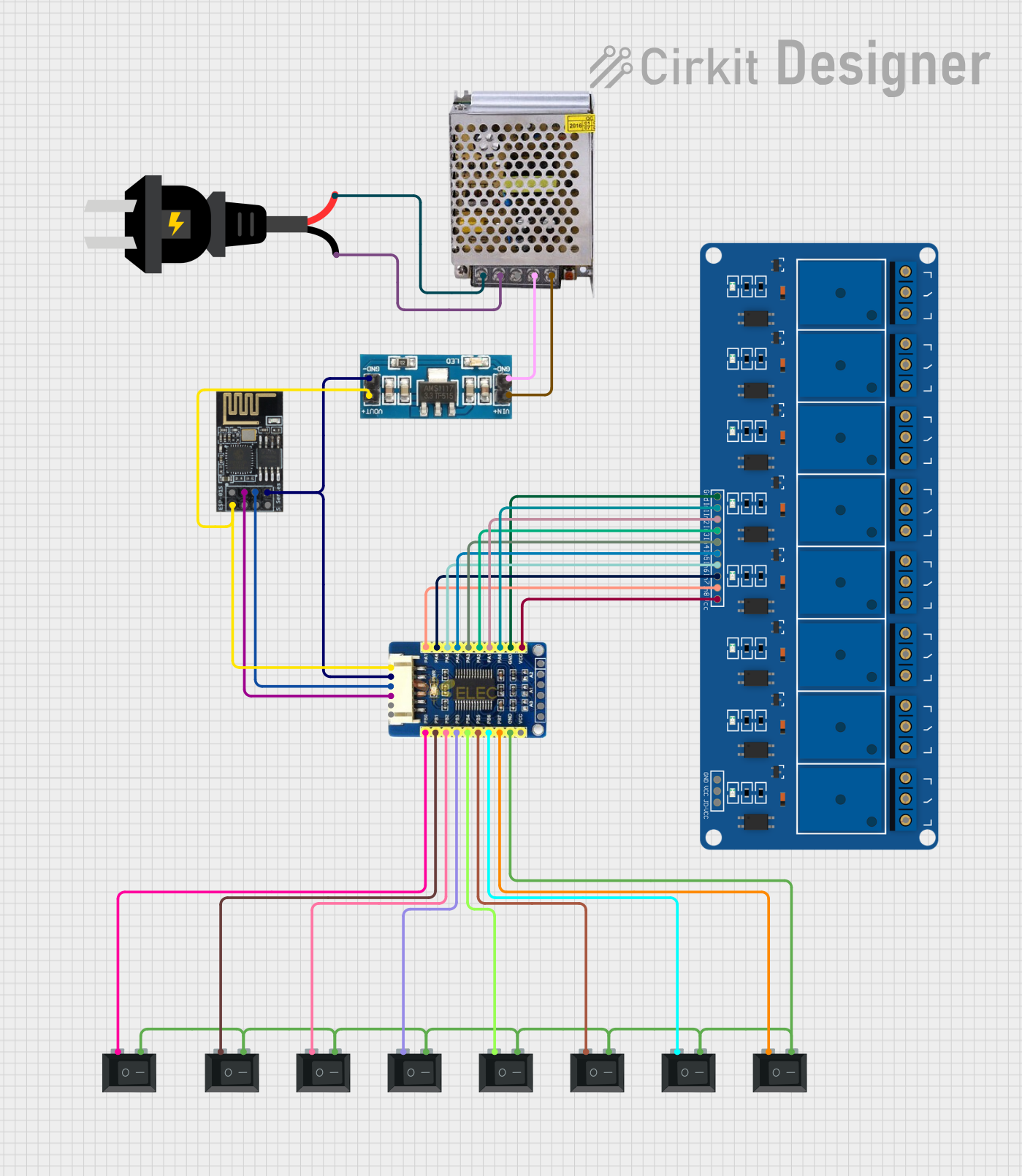
 Open Project in Cirkit Designer
Open Project in Cirkit Designer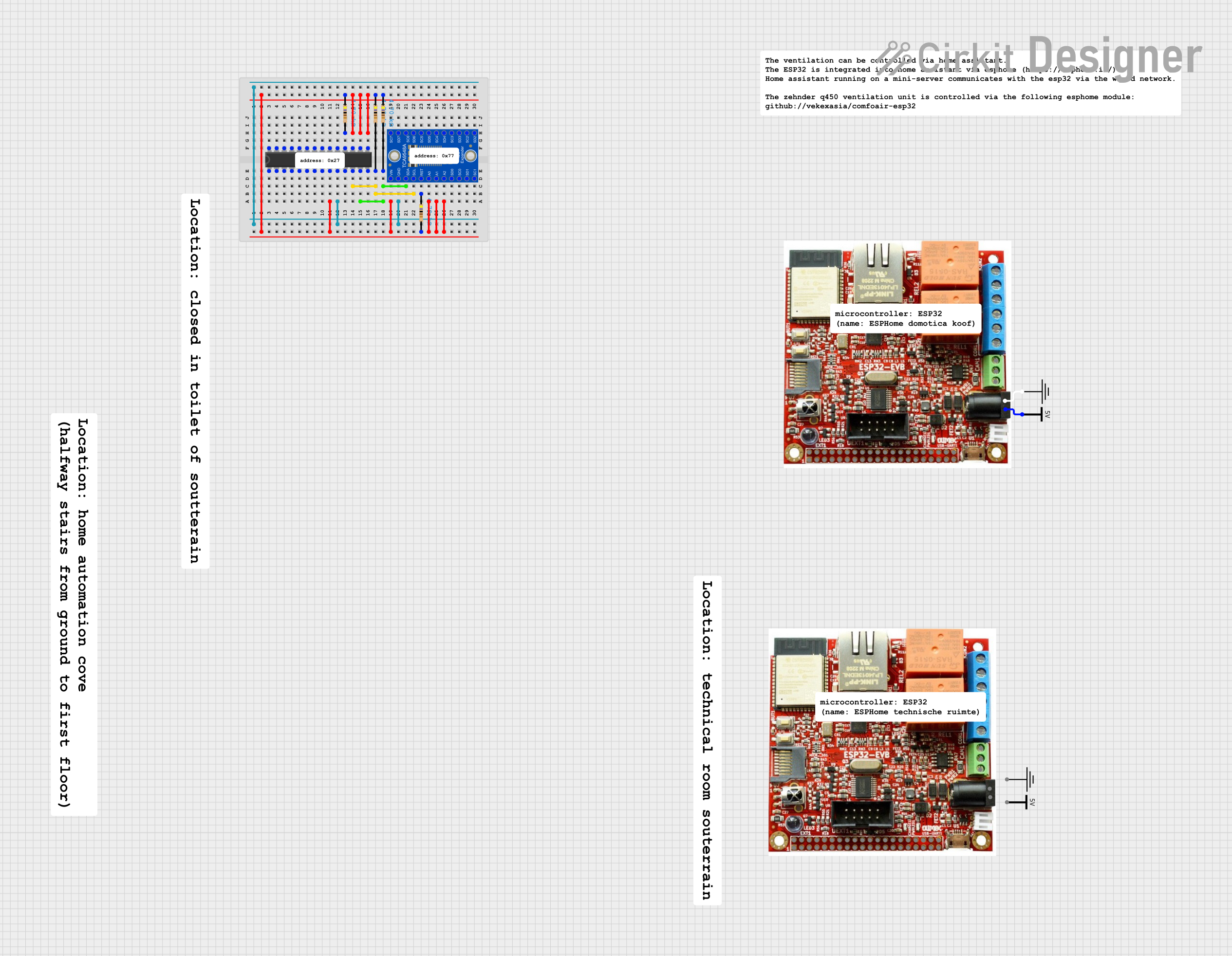
 Open Project in Cirkit Designer
Open Project in Cirkit Designer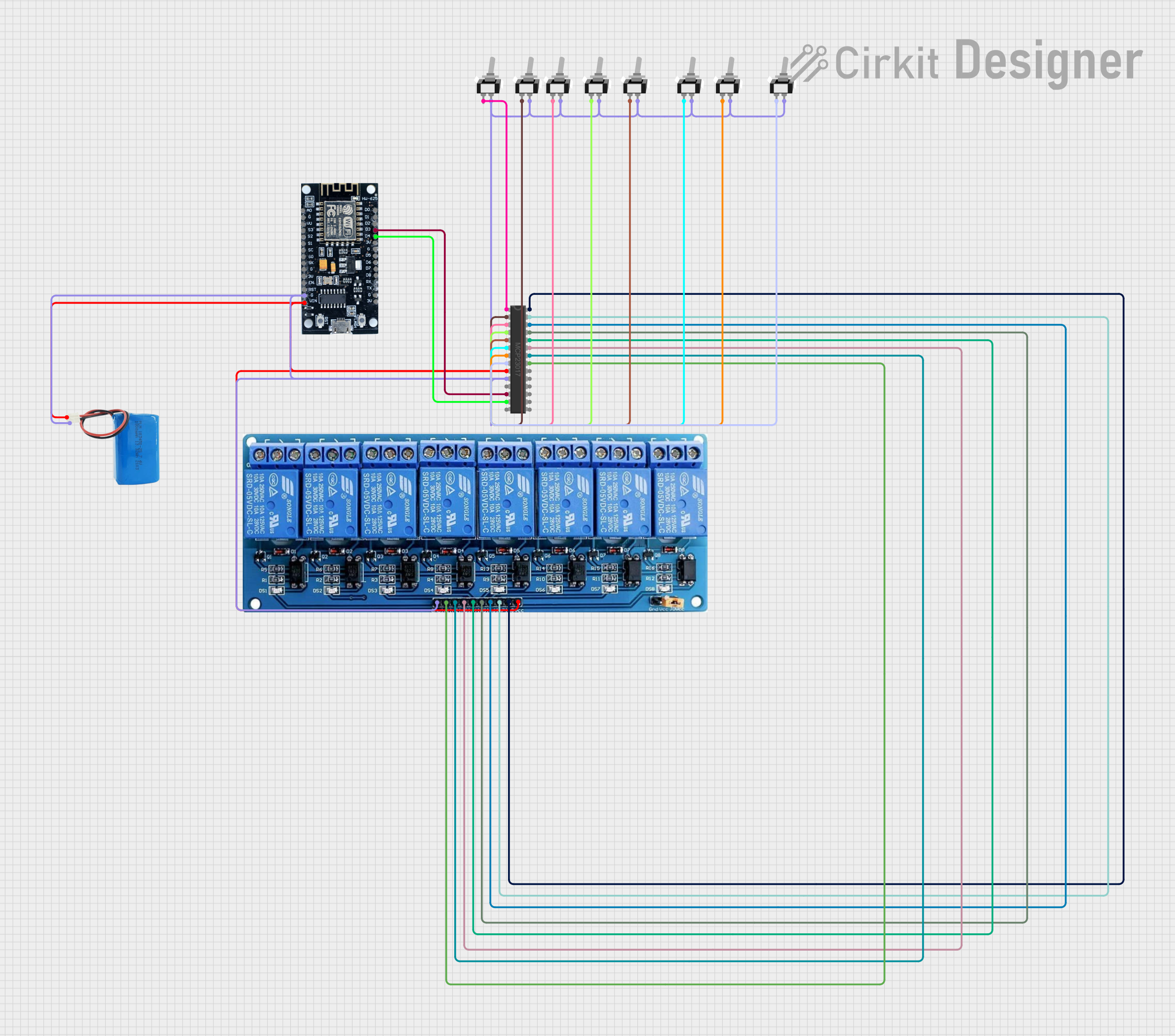
 Open Project in Cirkit Designer
Open Project in Cirkit Designer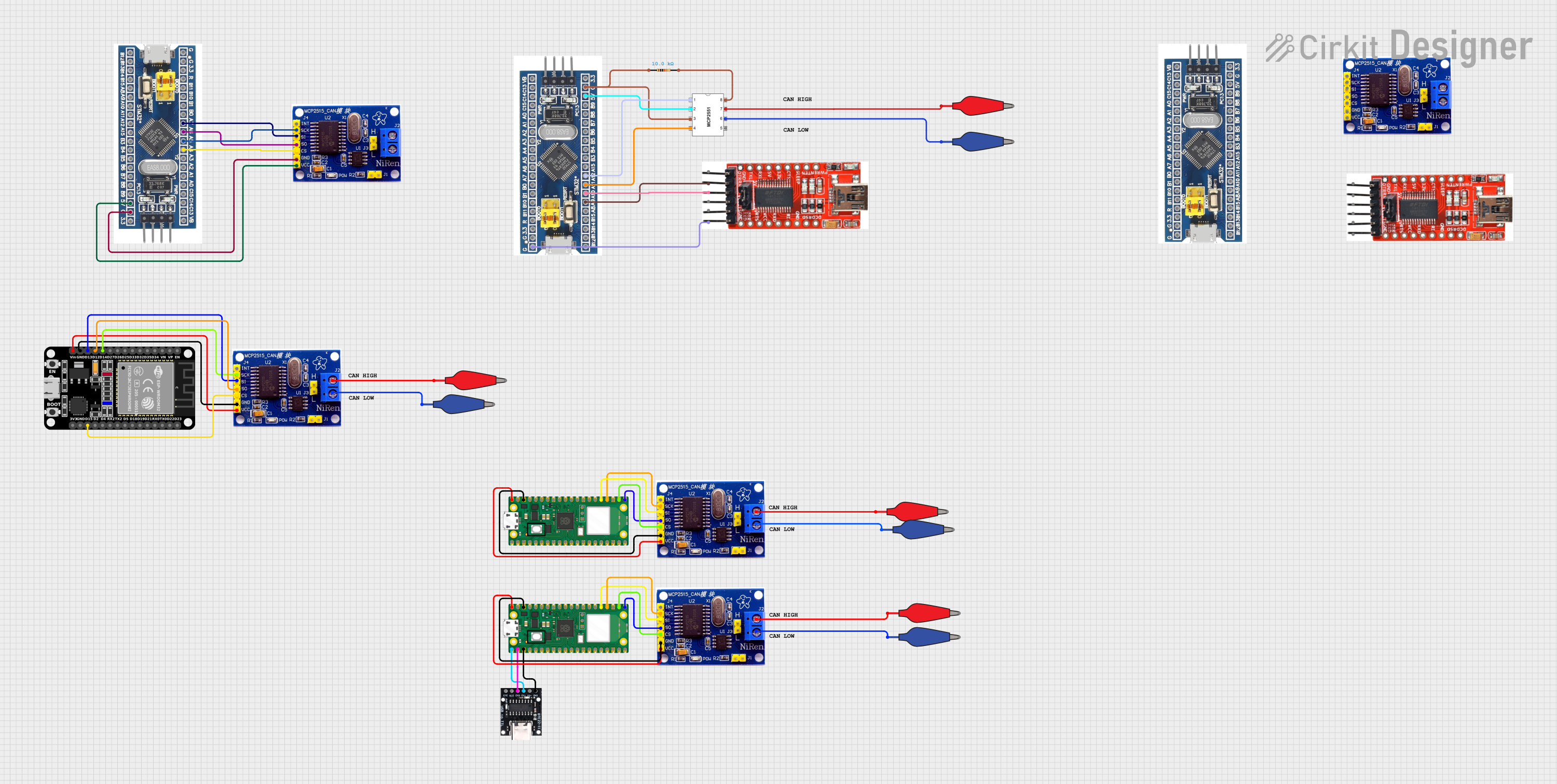
 Open Project in Cirkit Designer
Open Project in Cirkit DesignerExplore Projects Built with MCP7384XX

 Open Project in Cirkit Designer
Open Project in Cirkit Designer
 Open Project in Cirkit Designer
Open Project in Cirkit Designer
 Open Project in Cirkit Designer
Open Project in Cirkit Designer
 Open Project in Cirkit Designer
Open Project in Cirkit DesignerTechnical Specifications
Key Technical Details
- Battery Type: Li-ion/Li-Poly
- Charge Regulation: Linear
- Input Voltage Range: 4.5V to 6.0V
- Programmable Charge Current: Up to 1A
- Charge Voltage Accuracy: ±0.5%
- Operating Temperature Range: -40°C to +85°C
Pin Configuration and Descriptions
| Pin Number | Name | Description |
|---|---|---|
| 1 | VDD | Power supply input. Connect to a 4.5V to 6.0V source. |
| 2 | GND | Ground reference for the circuit. |
| 3 | PROG | Charge current programming pin. Connect a resistor to GND to set the charge current. |
| 4 | STAT1 | Status output 1. Can be used to indicate charge status or faults. |
| 5 | STAT2 | Status output 2. Can be used in conjunction with STAT1 for charge status indication. |
| 6 | THERM | Temperature sense input. Connect to an NTC thermistor for temperature-based charge suspension. |
| 7 | VBAT | Battery connection pin. Connect to the positive terminal of the battery. |
| 8 | CE | Chip enable input. A low level enables the chip; a high level puts it into shutdown mode. |
| 9 | - | Not connected. |
| 10 | - | Not connected. |
Usage Instructions
How to Use the MCP7384XX in a Circuit
Power Supply Connection: Connect a stable 4.5V to 6.0V power supply to the VDD pin and connect the GND pin to the system ground.
Setting Charge Current: Connect a resistor from the PROG pin to GND to set the desired charge current. The value of the resistor can be calculated based on the datasheet specifications.
Battery Connection: Connect the positive terminal of the Li-ion/Li-Poly battery to the VBAT pin.
Temperature Sensing: If temperature-based charge suspension is desired, connect an NTC thermistor to the THERM pin.
Charge Enable: To enable charging, apply a low level to the CE pin. To disable or put the chip into shutdown mode, apply a high level.
Status Indication: Connect STAT1 and STAT2 to LEDs or to a microcontroller to monitor the charge status.
Important Considerations and Best Practices
- Ensure that the power supply voltage does not exceed the maximum input voltage rating.
- Use a stable power source to avoid fluctuations that could affect the charging process.
- Always verify the charge current setting by measuring the voltage across the PROG resistor and consulting the datasheet.
- Implement proper thermal management to prevent overheating during charging.
- Monitor the status outputs to ensure the battery is charging correctly and to detect any faults.
Troubleshooting and FAQs
Common Issues
- Battery Not Charging: Ensure that the CE pin is enabled, the power supply is within the specified range, and the PROG resistor is correctly sized.
- Overheating: Check for adequate ventilation around the MCP7384XX and confirm that the charge current is not set too high.
- Inaccurate Charge Current: Double-check the value of the PROG resistor and ensure it is within tolerance.
Solutions and Tips
- If the battery is not charging, verify the connections to the VBAT, VDD, and GND pins, and ensure the CE pin is low.
- For overheating issues, consider adding a heatsink or improving airflow around the component.
- Use precision resistors for setting the charge current to improve accuracy.
FAQs
Q: Can the MCP7384XX be used for charging multiple cells in series? A: No, the MCP7384XX is designed for single-cell Li-ion/Li-Poly batteries.
Q: What should I do if the STAT1 and STAT2 LEDs do not light up? A: Check the connections to the STAT pins and ensure that the LEDs are correctly oriented. Also, verify that the MCP7384XX is not in shutdown mode.
Q: How can I adjust the charge current? A: Change the value of the resistor connected to the PROG pin according to the formula provided in the datasheet.
Q: Is it necessary to use the THERM pin? A: While not mandatory, using the THERM pin with an NTC thermistor is recommended for safety, as it allows the MCP7384XX to suspend charging if the battery temperature is out of the safe range.
For any further assistance or detailed information, refer to the MCP7384XX datasheet or contact technical support.